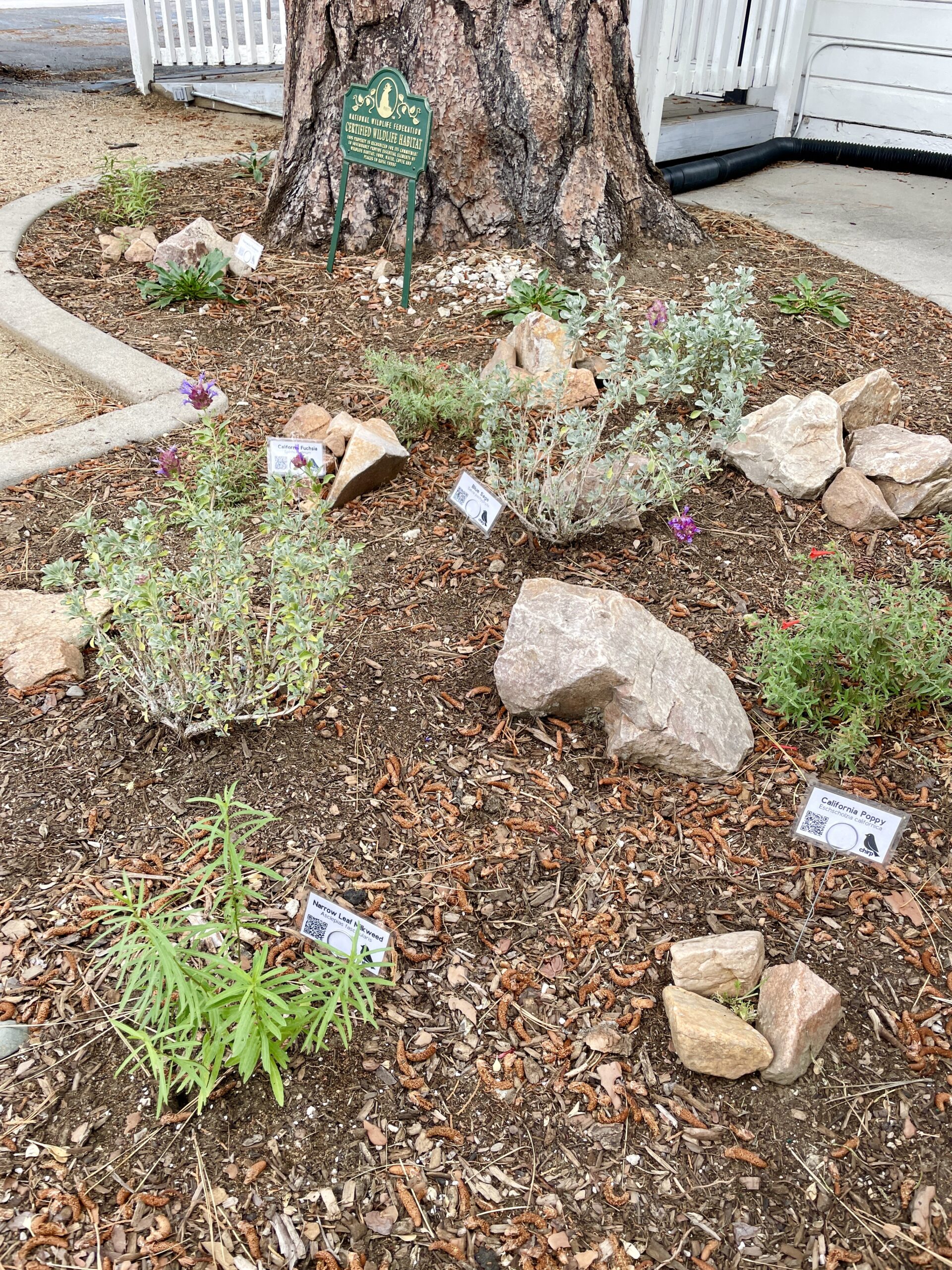Welcome to our enchanting native plant garden located at Chirp on Bonanza Trail in Big Bear Lake! This garden is a haven for birdwatchers and nature lovers, offering an array of native plants that not only beautify the landscape but also play a crucial role in supporting local bird species and pollinators like bees and butterflies.
By creating the Chirp Native Plant Garden, we aim to inspire others to incorporate native plants into their own gardens and outdoor spaces. Native plants not only enhance the beauty of the landscape but also contribute to the conservation of local wildlife. We believe that by providing a welcoming habitat, we can foster a deeper connection with nature and promote the importance of environmental stewardship.
Inspiration and Planning
Gardens and plants have fascinated Marta Neely – Chirp Nature Center employee – since she was a child. She remembers her first experience with gardening in elementary school.
“I think my interest probably began in second grade when we read ‘Johnny Appleseed,’” Marta says. “And then we did a wonderful activity where we planted seeds in sponges on a plate of water … and the seeds sprouted. I was just in love with nature at that point.”
Even so, it wasn’t until her move to Big Bear in 2005 that she was able to fulfill that passion for gardening by planting her first real garden at her mountain home.
Native plants of Big Bear fascinate Marta, so when Chirp owner Randy Putz expressed his hope to plant a native garden on the Chirp grounds, Marta was eager to take on the project.
“Once I found out that (Randy) was interested in native plants, I was so excited,” Marta says. “It goes hand in hand with supporting birds and wildlife.”
Planning for the Chirp Garden, which is located in the front of the store on Bonanza Trail in Big Bear Lake, began in the summer of 2023. Marta designed the garden, laying out the plan for each of the native plants — firecracker pentstemons, scarlet bugler, California fuchsia, rose sage, California poppies, and narrow-leaf milkweed.
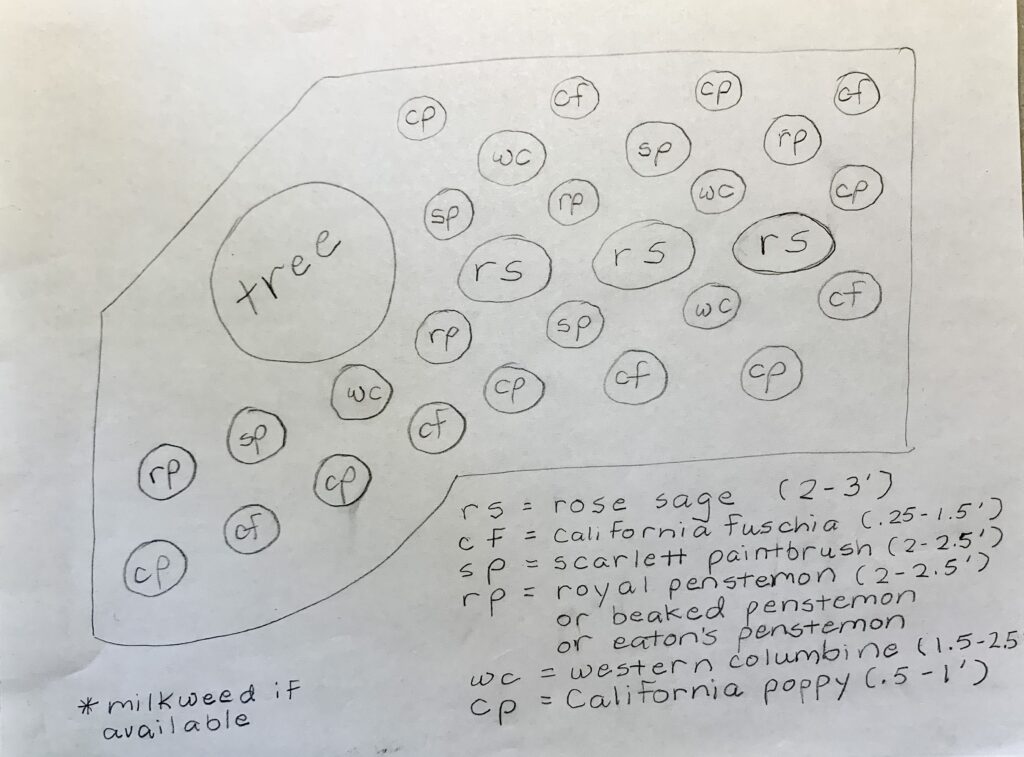
“It involved researching actually what are Big Bear native plants,” Marta says. “Randy did most of the research on that. He gave me a list of Big Bear native plants. I found the ones that had flowers that attract hummingbirds and butterflies.”
The importance of having the Chirp garden for Marta is to enjoy the beauty of and protect Big Bear’s native species. “While many flowers might attract bees and butterflies, what I learned in doing my research is that each plant I selected I saw that they attract different kinds of butterflies. Each plant has its own species that it attracts.”
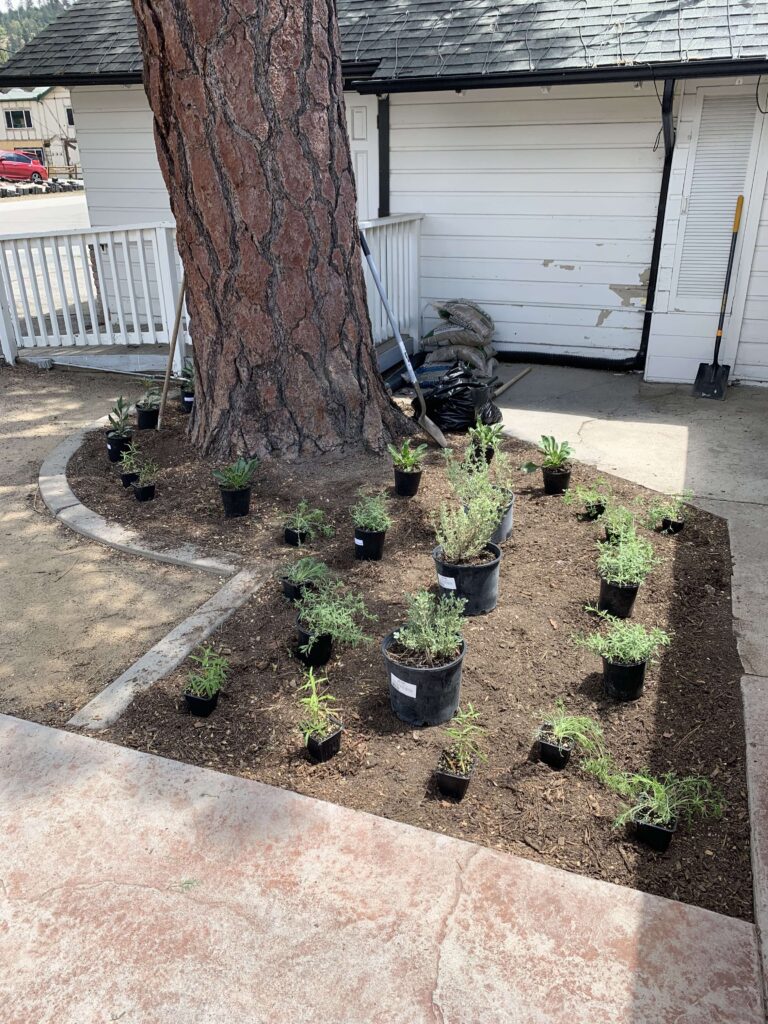
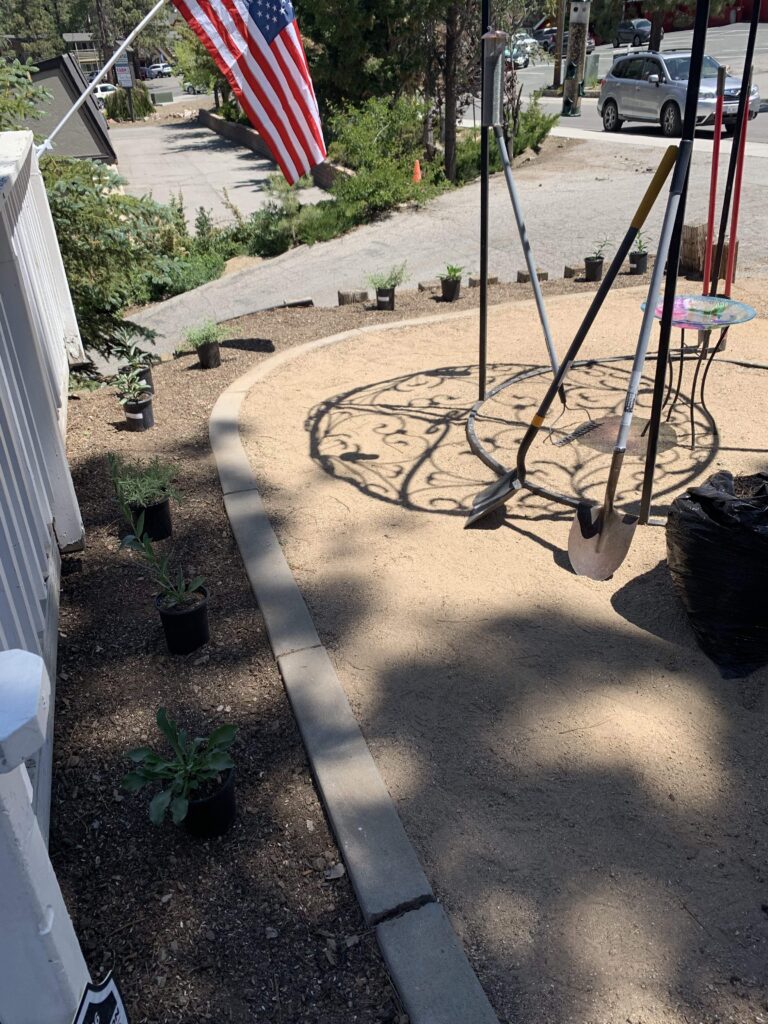
The birds have noticed the new additions to the Chirp landscape. “It was so exciting to see a hummingbird visit four of our flowering fuchsias,” Marta says. “That was the biggest reward I could have gotten.”
Doing research is key to creating a Big Bear native plant garden. “I believe we have information on our website,” Marta says, adding that local nurseries were very helpful when locating native plants for Chirp. “Hood Growers put in the effort to help us find the plants on our list.”
Big Bear Native Plants
Let’s take a stroll through our garden and explore some of the native plants you’ll find:
- Eaton’s Penstemon (Penstemon eatonii) – With its majestic purple spikes reaching towards the sky, this perennial beauty captures hearts effortlessly while attracting bees like magnets.
- Scarlet Buglar (Penstemon centranthifolius) – Stunning penstemon with scarlet blooms for the garden. Give little supplemental water for year after year spring blooms and watch hummingbirds succumb to their irresistible allure!
https://calscape.org/Penstemon-centranthifolius-(Scarlet-Bugler) - California Fuchsia (Epilobium canum) – Get ready for fireworks in your garden when these stunning red trumpet-shaped blossoms burst forth throughout summer and fall. A favorite of hummingbirds. Recommended for erosion control. Reseeds easily. Tolerates heavy soils. https://calscape.org/Epilobium-canum-(California-Fuchsia)
If you’re interested in planning a garden specifically to attract hummingbirds, check out our blog article on hummingbird gardens.
- California Poppy (Eschscholzia californica) – California’s state flower, the CA poppy, with its bright orange blossoms, is one of our most recognizable annual wildflowers. Best grown from seed sown in fall at the start of the rainy season. No special care is needed, as they will usually germinate even in the poorest of soils with nothing more than rainfall.
https://calscape.org/Eschscholzia-californica-(California-Poppy) - Narrow Leaf Milkweed (Asclepias fascicularis) – Forage source for the Monarch butterfly and Striated Queen. Host plant for Monarch caterpillars. Interesting button flowers; usually forms small colonies. Adaptable to most conditions. Orioles use dry stems for nesting.
https://calscape.org/Asclepias-fascicularis-(Narrow-Leaf-Milkweed) - Palmer’s Penstemon (Penstemon palmeri) – Showy pink penstemon with slim scarlet tubes. The only penstemon with fragrant flowers. Suited for dry, rocky slopes and deserts. Can tolerate clay soils.
https://calscape.org/Penstemon-palmeri-(Palmer’s-Penstemon) - Rose Sage (Salvia pachyphylla) – aka Blue or Mountain Desert Sage, A low-growing fragrant perennial with beautiful two-tone flowers. Native to the high desert, this sage tolerates extreme drought, heat and freezing temperatures. Grey foliage and small leaves provide texture in the garden.
https://calscape.org/Salvia-pachyphylla-(Blue-Sage)
If you’re located in Big Bear, you can also find a more extensive list of native plants available for your garden on our blog post: Native, Bird-Friendly, Drought-Tolerant, And Firewise Plant Guide For The Big Bear Valley.
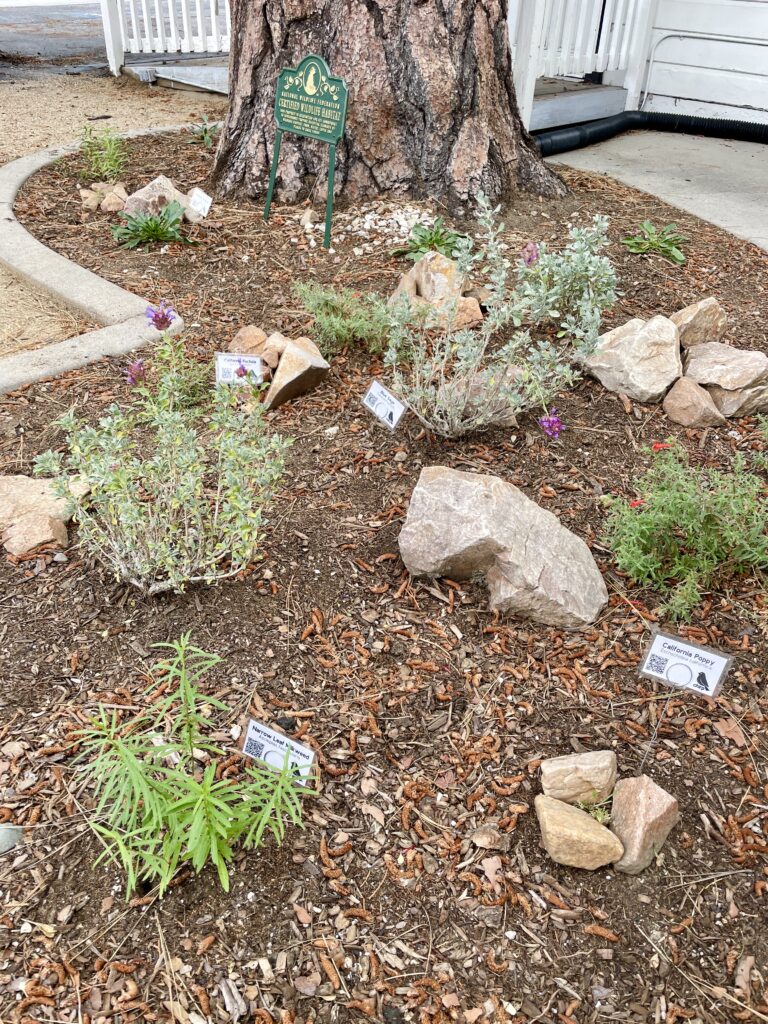
Why Are Native Plants So Important?
Native plants have evolved to thrive in their local environment and are crucial for maintaining biodiversity. They provide food and habitat for birds and other wildlife, contributing to a healthy ecosystem. For birdwatchers, these plants attract a variety of bird species, making birding more exciting and fulfilling. And why should we give preference to native plants over exotic ones? Well, let us share some compelling reasons:
- Adaptability: Native plants have evolved over centuries to thrive in their specific environments, making them resilient to local climate conditions and requiring minimal care once established.
- Ecosystem Support: By planting native species, you become a hero for biodiversity! These plants provide food and shelter for vital pollinators like bees, butterflies, and birds – helping maintain the delicate balance of our ecosystems.
- Water Conservation: Our carefully selected assortment includes some drought-tolerant wonders that will reduce water consumption without compromising on beauty or wildlife attraction power!
- Easy Maintenance: Add low-maintenance magic into your life by choosing natives that are well-suited to your region. They’ll reward you with seasonal delights year after year with limited fuss required from you!
- Reducing Invasive Risk: Introducing exotic species can disrupt ecosystems by outcompeting native plant populations. To protect fragile habitats & encourage ecological resilience, it’s crucial we embrace the magnificence of indigenous flora.
With Chirp’s garden as inspiration, you too can create an awe-inspiring sanctuary for wildlife right at home, stepping outside into nature’s haven within reach. It doesn’t matter if you’re new to gardening or already possess a green thumb; there is something incredibly rewarding about witnessing flourishing flowers swaying gently while being serenaded by vibrant songbirds overhead. And remember, every plant in your garden is a step towards supporting your local ecosystem.
So, next time you’re in the area, why not stop by the Chirp’s Native Plant Garden? You’ll be amazed at the variety of bird species you can spot while enjoying the beauty of native plants. Chirp Nature Center is open daily from 10 a.m. to 6 p.m. and is located at 578 Bonanza Trail in Big Bear Lake, California. For more information, visit www.chirpforbirds.com.

